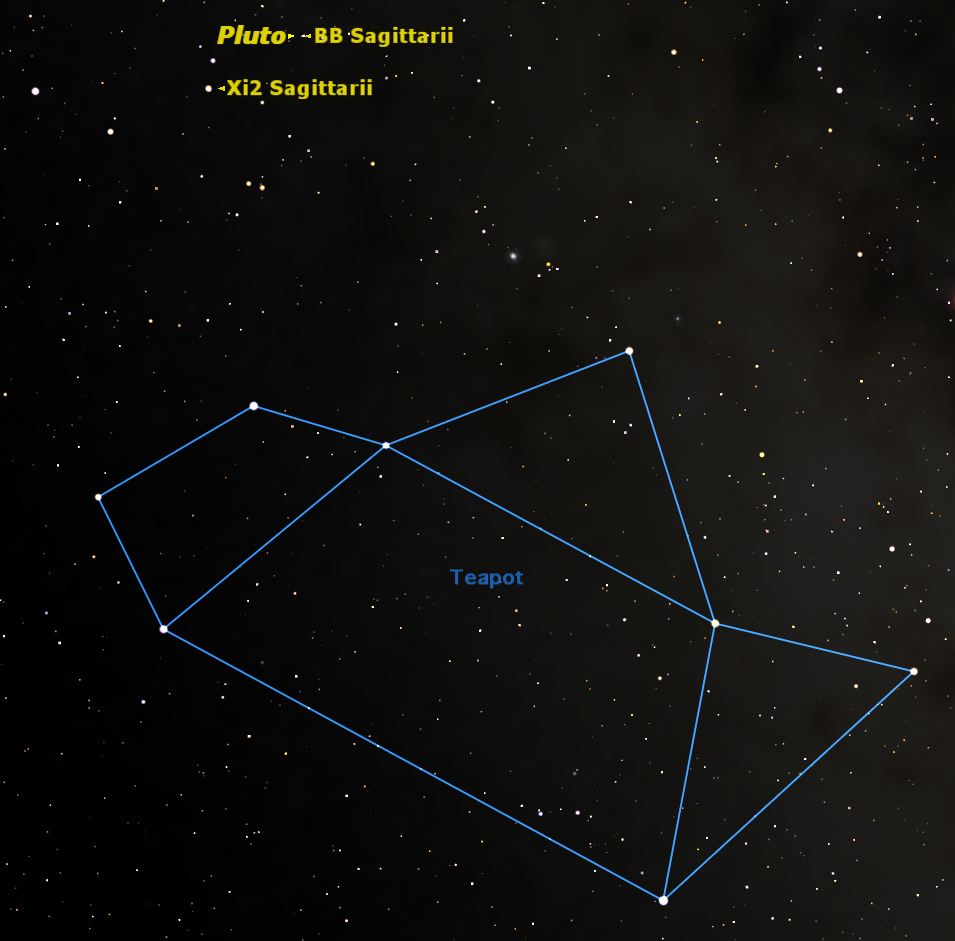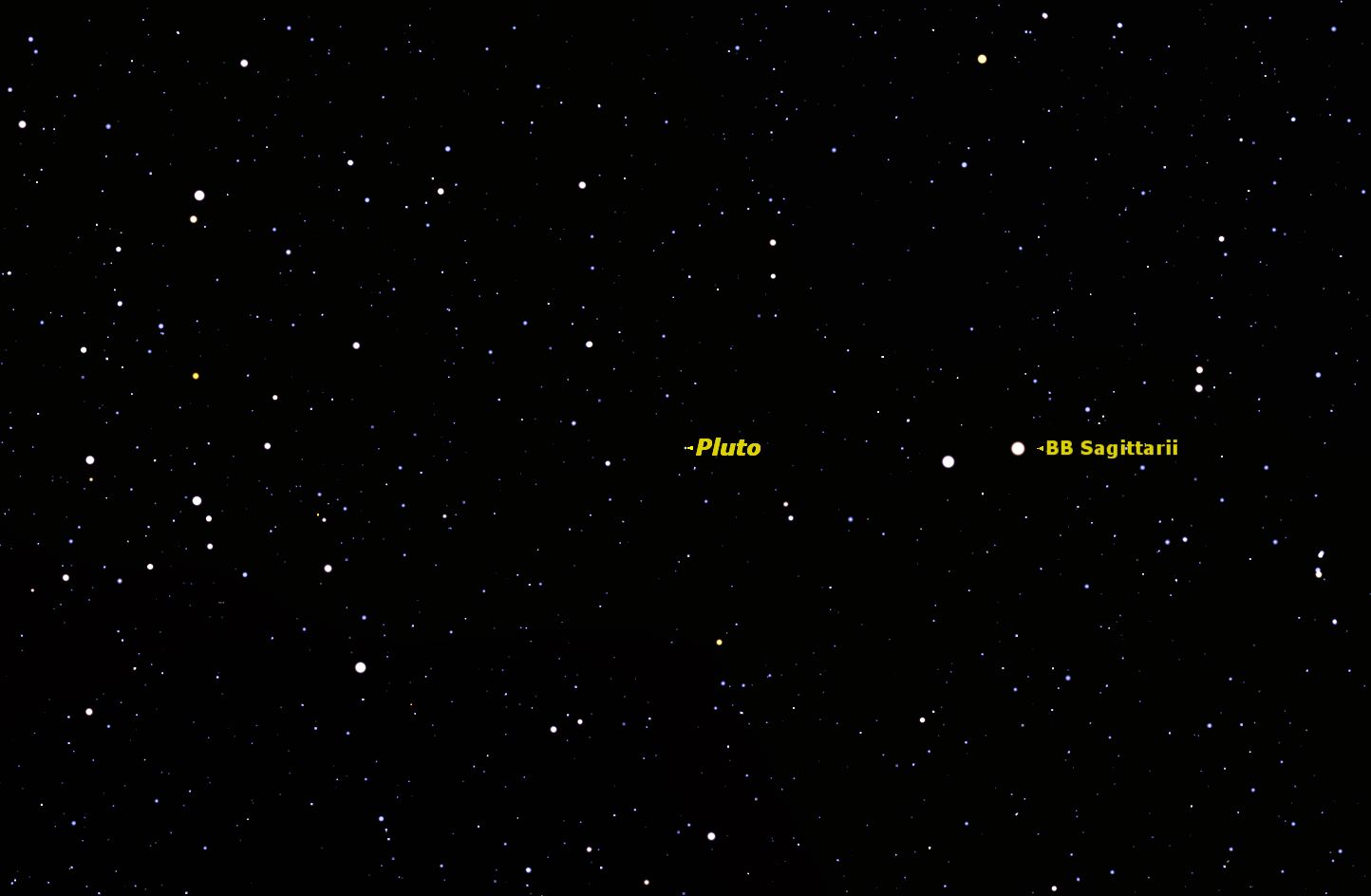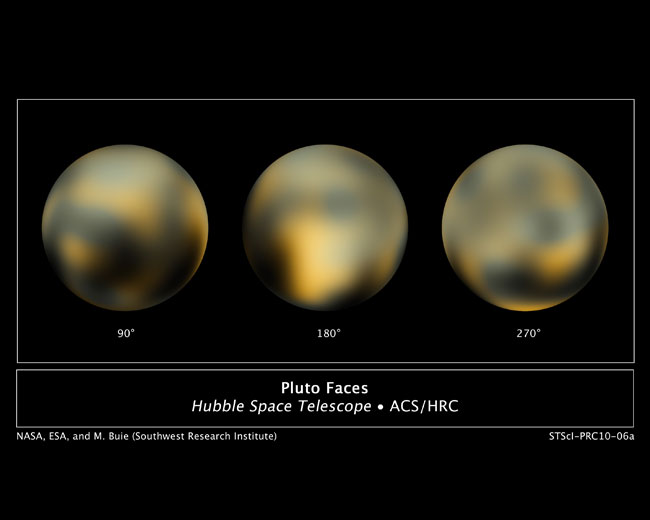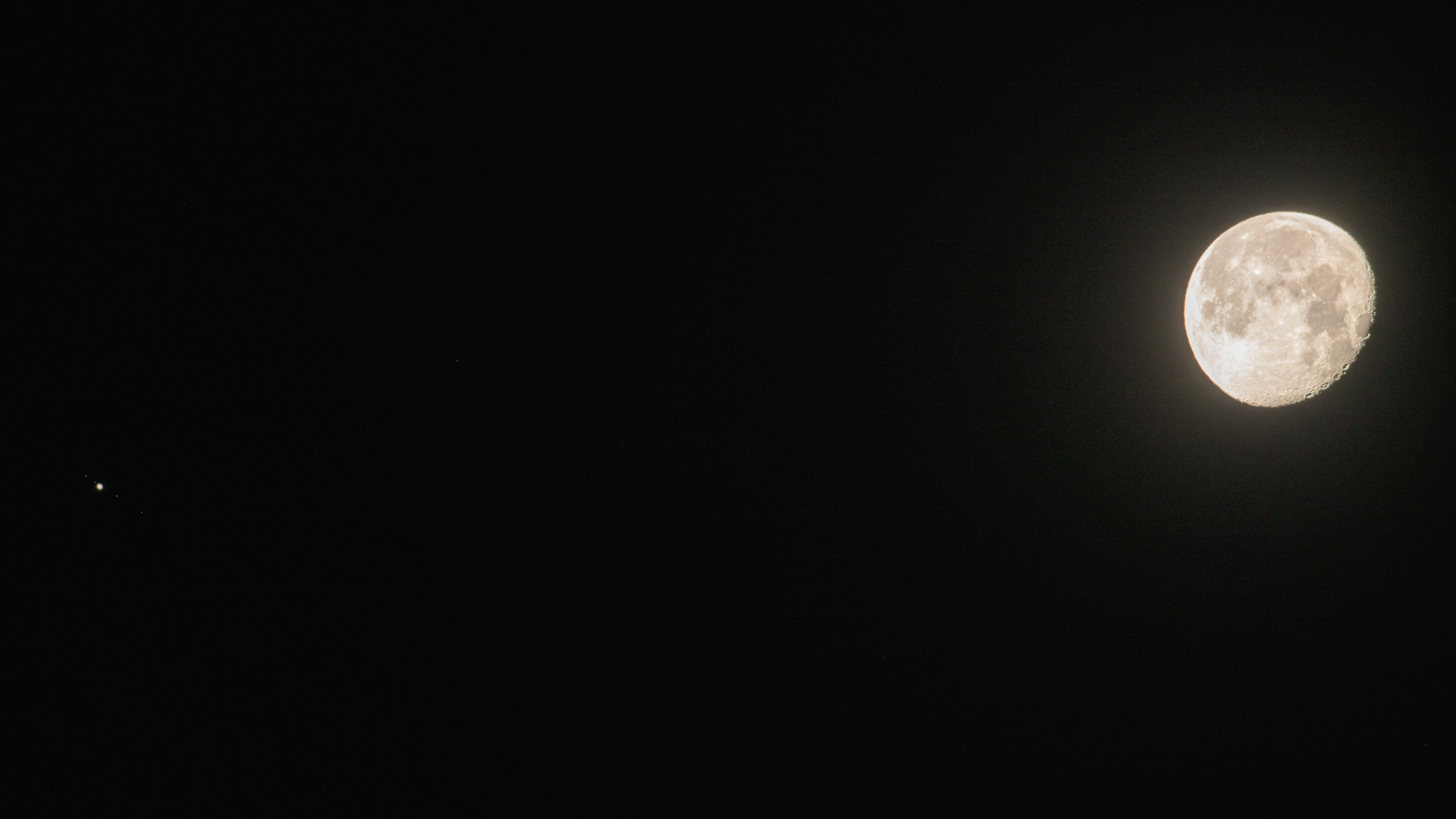How to Scope Out Pluto in the Night Sky Friday

In the wee hours of Friday morning (July 4) Pluto will be opposite the sun in the sky.
Called opposition, Pluto will rise as the sun sets, and set as the sun rises. Friday at 4 a.m. EDT (0800 GMT) marks the only night of 2014 when this cosmic alignment can be observed all night.
Pluto was discovered by Clyde Tombaugh at Lowell Observatory in 1930. At the time, it was considered to be the ninth planet in the solar system. But in 2006, astronomers reclassified it as a "dwarf planet," and later created a new category, "plutoid," for objects like Pluto. Pluto was also the first object discovered in the Kuiper Belt, so it is also classified as a Kuiper Belt Object, or "KBO." So many names for such a tiny world. [See photos of Pluto and its moons]
Pluto is a rocky world about 1,485 miles (2,390 kilometers) in diameter, with a tenuous atmosphere. It has an unusual orbit. Although its average distance from the sun is 39.3 astronomical units (3,653 million miles, or 5,879 million km), at times it ventures closer to the sun than Neptune.
Pluto is now known to have at least five moons, one of which, Charon, is more than half as large as Pluto itself.
In slightly more than a year from now, on July 15, 2015, we will get our first close look at Pluto when NASA's New Horizons probe flies by it. Until then, the most we have seen is a blurry image made with the Hubble Space Telescope.
In all but the largest telescopes, Pluto looks just like a star. Although it is not much to look at, amateur astronomers can claim bragging rights for having seen Pluto with their own telescopes. Here's how to do it:
Breaking space news, the latest updates on rocket launches, skywatching events and more!
First, you need a fairly large telescope, at least 10 inches aperture, because Pluto is currently at magnitude 14.0, very dim in the sky. Second, you need a very good chart of the stars through which Pluto is passing. The best printed star atlases go down to 11th magnitude, which is not faint enough.
You can print your own finder charts using software like Starry Night. Check out these two charts to help you on your quest.
The first chart shows Pluto in relation to the familiar "Teapot" asterism of Sagittarius. Look first for Xi2 Sagittarii, 5 degrees north of the Teapot's handle. Close to Xi2 you will find the optical double star BB Sagittarii. Switching to the more detailed second chart, we will use BB Sagittarii to find Pluto.
BB Sagittarii is an optical double — two unrelated stars that happen to fall close to the same line of sight. The star on the left is magnitude 7.5, located 2,249 light-years from Earth. The star on the right is a Cepheid variable, ranging in brightness from 6.5 to 7.3 magnitude with a period of 6.6 days, and is more than twice as far away at 5,436 light years. No matter where it is in its cycle of variation, it should be brighter than the left star in the pair.
The two stars in BB Sagittarii point to a 12th magnitude double star, and just beyond that is where you will find 14th magnitude Pluto. Dimmer objects are assigned higher magnitudes, while bright objects have lower ones. The human eye can perceive objects with magnitudes as low as 6.5 or so. [Best Skywatching Events of July 2014 (Images)]
Since Pluto is currently passing in front of a scattering of stars of similar brightness, how will you recognize it? The only way is to plot all the stars in the area on two successive nights: Pluto will be the one that moves.
There are two things to watch out for when trying to spot Pluto. First is that Pluto is a moving target. My chart shows it at the exact time of opposition, 4 a.m. EDT on July 4. At any other time or date, it will be elsewhere. That’s why you need to use a planetarium program like Starry Night that will allow you to set the exact time and date of your observation. To give you some idea of how much Pluto moves in 24 hours, it is about the same angle as the separation between the two components of BB Sagittarii.
The other problem is that, when you get down to stars as faint as 14th magnitude, no planetarium program is 100 percent accurate. All use various star catalogs, but no star catalog is perfect. This is another reason for sketching the stars yourself at the eyepiece. What I often do is to start with the chart generated by Starry Night, and then compare it with what I actually see through the eyepiece. Then I plot anything that isn't on the printed chart. Finally, the next night I revisit the area, and plot the stars all over again.
Once you have spotted Pluto, you can truthfully say that you have seen the farthest object in our solar system visible with the human eye. There have been many new Kuiper Belt Objects discovered in the last few years, but all are fainter than magnitude 16, and well beyond the reach of amateur telescopes.
This article was provided to Space.com bySimulation Curriculum, the leader in space science curriculum solutions and the makers of Starry Night and SkySafari. Follow Starry Night on Twitter @StarryNightEdu. Follow us @Spacedotcom, Facebook and Google+. Original article on Space.com.

Geoff Gaherty was Space.com's Night Sky columnist and in partnership with Starry Night software and a dedicated amateur astronomer who sought to share the wonders of the night sky with the world. Based in Canada, Geoff studied mathematics and physics at McGill University and earned a Ph.D. in anthropology from the University of Toronto, all while pursuing a passion for the night sky and serving as an astronomy communicator. He credited a partial solar eclipse observed in 1946 (at age 5) and his 1957 sighting of the Comet Arend-Roland as a teenager for sparking his interest in amateur astronomy. In 2008, Geoff won the Chant Medal from the Royal Astronomical Society of Canada, an award given to a Canadian amateur astronomer in recognition of their lifetime achievements. Sadly, Geoff passed away July 7, 2016 due to complications from a kidney transplant, but his legacy continues at Starry Night.


